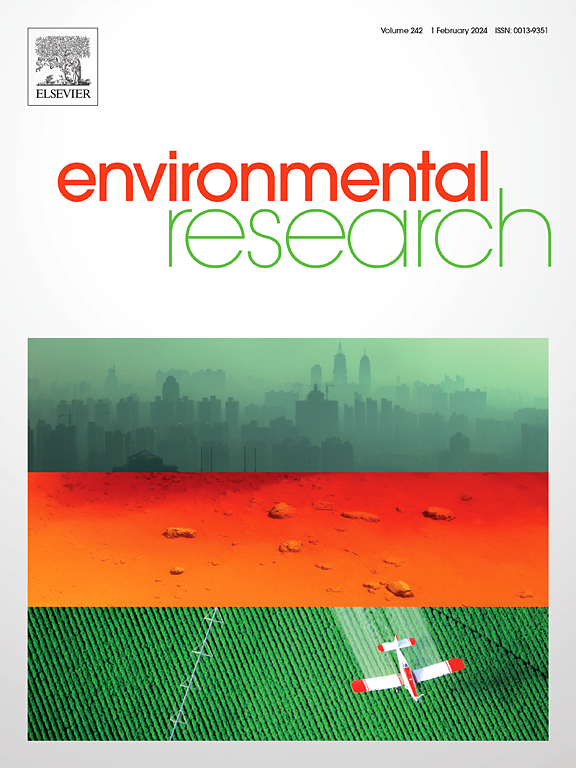Ca2+/Ce3+共掺杂Bi2O2CO3光催化剂对水中抗生素污染物的高效降解
IF 7.7
2区 环境科学与生态学
Q1 ENVIRONMENTAL SCIENCES
引用次数: 0
摘要
针对Bi2O2CO3 (BOC)光催化剂可见光响应范围有限、载流子复合率高的瓶颈问题,采用水热法制备了Ca2+/Ce3+共掺杂Bi2O2CO3复合光催化剂。对不同表征方法的分析表明,双掺杂会导致晶格畸变并诱发氧缺陷。在可见光照射下,BOC-Ca-Ce4对环丙沙星(CIP)和左氧氟沙星(LVX)的降解效率分别达到92.56%和90.39%,在自来水和湖水等复杂水体中保持一定的降解效率。ESR和捕获实验证实,•O2−和h+是主要的活性物质。机理分析表明,Ce3+/Ce4+的价循环和Ca2+的局域电场协同促进了载流子的空间分离。通过中间产物分析,CIP最终矿化为CO2/H2O, ECOSAR毒性评价显示生态毒性降低。本研究为双组分掺杂光催化剂的能带工程提供了一种新的设计策略。本文章由计算机程序翻译,如有差异,请以英文原文为准。

Efficient degradation of antibiotic pollutants in water by Ca2+/Ce3+ Co-doped Bi2O2CO3 photocatalysts
Aiming at the bottleneck problems of limited visible light response range and high carrier recombination rate of Bi2O2CO3 (BOC) photocatalyst, Ca2+/Ce3+ co-doped Bi2O2CO3 composite photocatalyst was constructed by hydrothermal method. The analysis of different characterization techniques shows that double doping can lead to lattice distortion and induce oxygen defects. Under visible light irradiation, the degradation efficiency of ciprofloxacin (CIP) and levofloxacin (LVX) by BOC-Ca-Ce4 reached 92.56 % and 90.39 %, respectively, and maintained a certain degradation efficiency in complex water bodies such as tap water and lake water. ESR and capture experiments confirmed that •O2− and h+ were the dominant active species. Mechanism analysis showed that the valence cycle of Ce3+/Ce4+ and the local electric field of Ca2+ synergistically promoted the spatial separation of carriers. Through intermediate product analysis, CIP was finally mineralized to CO2/H2O, and the ECOSAR toxicity assessment showed that the ecological toxicity was reduced. This study provides a new design strategy for energy band engineering of two-component doped photocatalysts.
求助全文
通过发布文献求助,成功后即可免费获取论文全文。
去求助
来源期刊

Environmental Research
环境科学-公共卫生、环境卫生与职业卫生
CiteScore
12.60
自引率
8.40%
发文量
2480
审稿时长
4.7 months
期刊介绍:
The Environmental Research journal presents a broad range of interdisciplinary research, focused on addressing worldwide environmental concerns and featuring innovative findings. Our publication strives to explore relevant anthropogenic issues across various environmental sectors, showcasing practical applications in real-life settings.
 求助内容:
求助内容: 应助结果提醒方式:
应助结果提醒方式:


